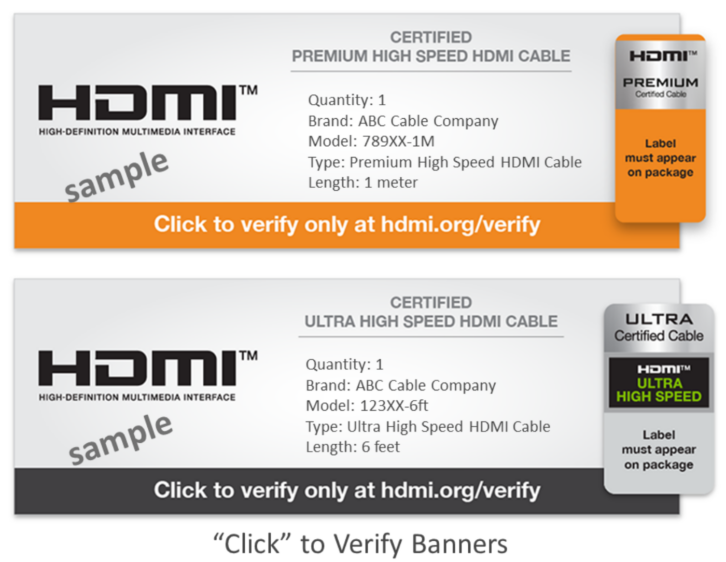Residential AV systems installers, like do-it-yourself consumers, have faced a serious problem when shopping for HDMI Cables online—at least until recently.
Due to various marketing terminology used online, it’s been difficult to be certain that the Premium High Speed HDMI® Cables and Ultra High Speed HDMI® Cables they were buying online met the rigorous testing and certification process authenticating their compliance with the HDMI Specifications.

However, a new HDMI Verification Banner program gives installers shopping online a way to verify that the cables they wish to buy have been certified under the right HDMI Compliance Test Specification needed to support a specification’s feature—regardless of whether the HDMI Certification Label on the packaging is visible on a manufacturer or reseller website.
In this interview, Brad Bramy, vice president of marketing and operations at HDMI LA, discusses the new program, how it can assist online buyers and why it’s important to use certified cables.
Q: Why is HDMI Licensing Administrator’s new HDMI Verification Banner program important to residential systems organizations?
Brad Bramy: The program specifically addresses what is needed when shopping online for Premium High Speed HDMI Cables and Ultra High Speed HDMI Cables.
Manufacturers aren’t required to show an online photo of the certification label on the cables’ packaging. As a result, installers may have difficulty determining if the cables they are buying are licensed and certified.
HDMI LA has years of experience with our HDMI Cable Certification Program. It requires Premium High Speed HDMI Cables and Ultra High Speed HDMI Cables to pass rigorous testing and certification before being eligible to display physical HDMI Certification Labels. System installers can be confident that products carrying those labels meet the HDMI Specifications.
Our new HDMI Verification Banner program gives online shoppers that same level of confidence.
Q: When did HDMI LA launch the program?
BB: It began in early 2023. Among the first manufacturers to adopt it were Austere and Zeskit.
Q: How do cable vendors qualify for the new banner?
BB: The banners are an optional part of our existing HDMI Cable Certification Program, so any model that has qualified for a label over the last 18 months can get a banner.
Q: Is taking advantage of this new program simply a matter of looking for the banner on a retailer’s or manufacturer’s website?
BB: That’s the first step. Then an installer must click the banner. For some websites that don’t allow our embedded code, we provide a banner with a QR code that just needs to be scanned. So, either clicked or scanned –at that point, HDMI LA verifies the authenticity of the cable. Then the brand name, model and length of the cable are displayed.
It’s the same when scanning the physical Certification Labels affixed to packaging.
Q: What are the main benefits of determining the status of an HDMI Cable prior to purchase?
BB: There are several. First, installers can be certain that genuine certified Premium and Ultra High Speed HDMI Cables have been rigorously tested and certified at HDMI Authorized Test Centers or HDMI Forum Authorized Test Centers, respectively. That means they can be certain the cables they are buying comply with the HDMI Specifications, meet performance requirements for the stated feature sets and are compatible with HDMI Products.
Counterfeit and uncertified products, obviously, aren’t subject to this testing and as a result may suffer from subpar performance that degrades video and audio quality or may completely fail.
Second, an installer using certified cables can usually take them out of the equation as the source of a problem if there is a system failure. Rather than not knowing whether a component like a TV, AVR or soundbar has failed, installers can be certain that the cables meet HDMI Specification requirements and should probably start looking elsewhere for the problem. Using certified cables removes an unnecessary variable from the process of elimination.
Lastly, knowing a cable is certified means it has not been manufactured with substandard materials or with inadequate oversight—two factors that can compromise quality and possibly be responsible for safety hazards. That is reinforced because we continue to perform compliance audit testing even after cable certification by purchasing in-market cables and making sure they continue to be in compliance even as they are mass produced.
The terms HDMI, HDMI High-Definition Multimedia Interface, HDMI Trade Dress and the HDMI Logos are trademarks or registered trademarks of HDMI Licensing Administrator Inc.







